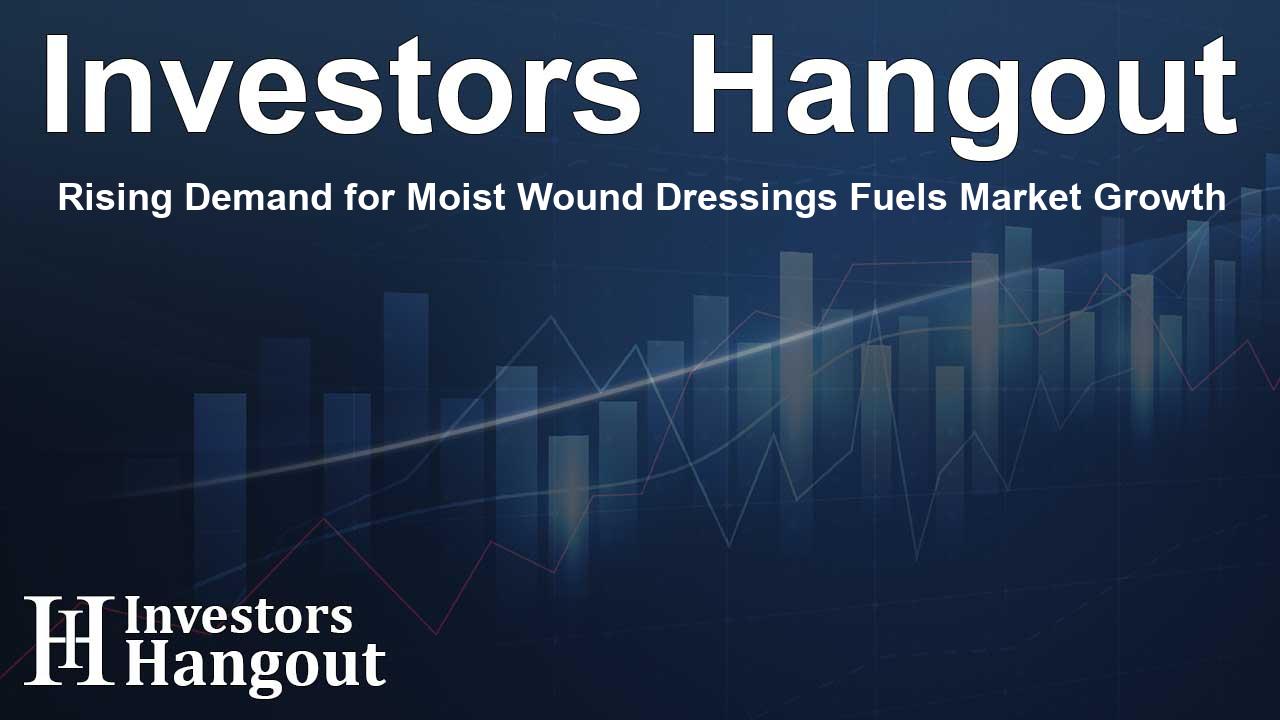Rising Demand for Moist Wound Dressings Fuels Market Growth

Growth of the Moist Wound Dressings Market
The moist wound dressings market is set to experience remarkable expansion in the coming years. A recent report indicates that the global market is estimated to grow by USD 1.34 billion from 2024 to 2028, with a compound annual growth rate (CAGR) of approximately 5.55%. This significant growth is primarily attributed to the rising incidences of both acute and chronic wounds, coupled with the ongoing innovations in healthcare, particularly driven by artificial intelligence (AI).
Understanding the Market Dynamics
One of the key factors driving this market is the increasing prevalence of various types of wounds, including surgical wounds, diabetic ulcers, and pressure sores. As the population ages and the rates of chronic illnesses climb, the demand for effective wound care solutions rises correspondingly. The healthcare sector is responding to this demand with advanced technologies that enhance the effectiveness of wound management.
Advancements in Wound Care Technologies
Technological advancement plays a crucial role in the evolution of the moist wound dressings segment. Innovations such as combination dressings, which incorporate various materials to improve efficacy and comfort, are gaining traction. Materials like foam, hydrocolloid, and alginate are commonly used because they help maintain a moist environment, which is crucial for optimal healing. Moreover, antimicrobial agents, such as silver and honey, are being integrated into these dressings to mitigate infection risks, particularly in wounds that are challenging to heal.
Challenges Facing the Market
Despite the positive outlook, the moist wound dressings market does face challenges, particularly pertaining to the costs associated with advanced wound care treatments. The financial burden of treating chronic wounds—like diabetic leg ulcers and pressure sores—can be significant. For instance, the average treatment cost can range from $3,000 to $4,000 per wound. These economic factors could potentially hinder market expansion, particularly in low- and middle-income regions where healthcare access is limited.
Insights on Market Segmentation
The moist wound dressings market is categorized by product type, end-users, and geography. Segmenting the market helps understand the specific needs and trends influencing each category. Key product segments include foam dressings, hydrocolloid dressings, and alginate dressings, while end-users are primarily hospitals, specialty clinics, and home healthcare settings.
Regional Market Overview
Regionally, the market shows robust growth across various areas, including North America and Europe, which are currently leading due to their advanced healthcare infrastructure. However, significant opportunities also exist in emerging markets within Asia and the Rest of the World. As these regions develop their healthcare systems, the demand for effective wound care products is expected to accelerate.
Key Players and Competition
Several notable companies are at the forefront of the moist wound dressings market, including industry leaders such as 3M Co., B.Braun, and Coloplast. These companies are heavily invested in research and development, focusing on creating innovative solutions tailored to the evolving needs of both healthcare providers and patients. Continuous efforts in product improvement and market expansion strategies are crucial for maintaining competitive advantages.
The Role of AI in Market Innovation
Artificial intelligence is reshaping how companies approach product development and customer care in the moist wound dressings market. AI's capacity to analyze large datasets and recognize patterns can lead to breakthroughs in wound management. By leveraging AI, companies can predict trends, streamline operations, and improve customer engagement.
Frequently Asked Questions
What is driving the growth of the moist wound dressings market?
The growth is primarily driven by the increasing incidence of wounds, aging populations, and advancements in wound care technologies, including the integration of AI.
Which products are leading in the market?
Leading products include foam dressings, hydrocolloid dressings, and alginate dressings, known for their effectiveness in maintaining moist environments for wound healing.
What challenges does the market face?
The market faces challenges related to the high costs of advanced wound treatment options, which can be burdening for both patients and healthcare systems.
How does AI impact the moist wound dressings market?
AI promotes innovation by offering data-driven insights that enhance product development and customer service, improving overall wound management strategies.
Which regions show significant growth potential?
While North America and Europe currently lead, significant growth potential exists in Asia and other emerging markets as healthcare access improves.
About The Author
Contact Dominic Sanders privately here. Or send an email with ATTN: Dominic Sanders as the subject to contact@investorshangout.com.
About Investors Hangout
Investors Hangout is a leading online stock forum for financial discussion and learning, offering a wide range of free tools and resources. It draws in traders of all levels, who exchange market knowledge, investigate trading tactics, and keep an eye on industry developments in real time. Featuring financial articles, stock message boards, quotes, charts, company profiles, and live news updates. Through cooperative learning and a wealth of informational resources, it helps users from novices creating their first portfolios to experts honing their techniques. Join Investors Hangout today: https://investorshangout.com/
The content of this article is based on factual, publicly available information and does not represent legal, financial, or investment advice. Investors Hangout does not offer financial advice, and the author is not a licensed financial advisor. Consult a qualified advisor before making any financial or investment decisions based on this article. This article should not be considered advice to purchase, sell, or hold any securities or other investments. If any of the material provided here is inaccurate, please contact us for corrections.
